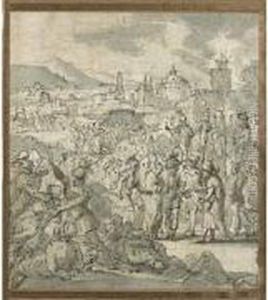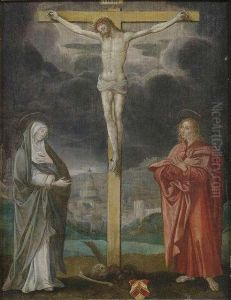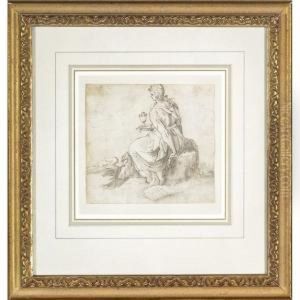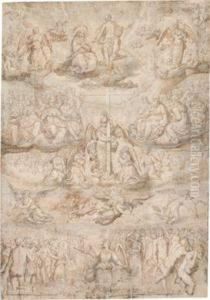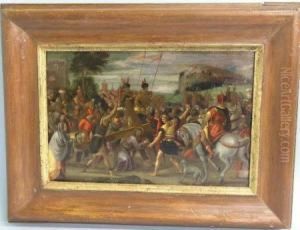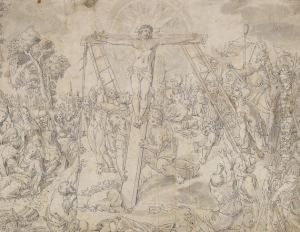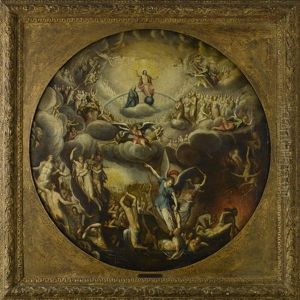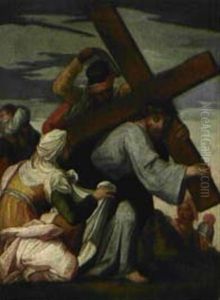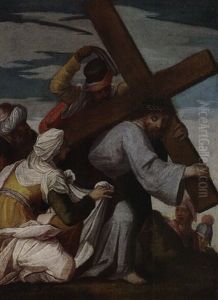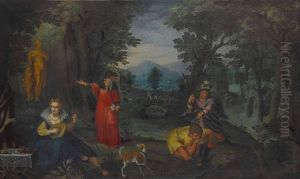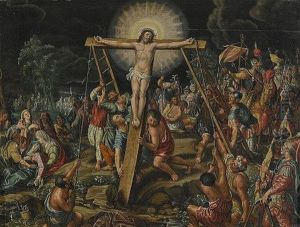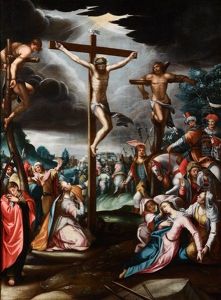Christoph Schwarz Paintings
Christoph Schwarz was a German painter from the late Renaissance period, born in Ingolstadt in 1545. Despite the limited documentation on his life, Schwarz's work has been recognized for its artistic quality and contribution to the period's visual culture. He was primarily known for his religious compositions, portraits, and mythological scenes, which were marked by a meticulous attention to detail and a vibrant use of color.
Schwarz's education and early career are shrouded in mystery, but it is believed that he traveled extensively in Italy, where he was exposed to the works of the Italian masters. This experience significantly influenced his artistic style, integrating Italian Renaissance characteristics with the Northern Renaissance traditions. By the time he returned to Germany, Schwarz had developed a unique style that blended the detailed realism typical of Northern European art with the graceful compositions and soft color palettes found in Italian paintings.
Throughout his career, Christoph Schwarz worked for various patrons, including members of the church and nobility, which was common for artists of his time. His religious works often featured elaborate scenes from the Bible, executed with a depth of emotion and a keen eye for human anatomy that reflected his studies of Italian art. Meanwhile, his portraits showcased the individuality and status of his subjects, capturing their personalities with a remarkable degree of realism.
Schwarz's mythological scenes were particularly noted for their imaginative interpretation and the skillful incorporation of classical themes into his compositions. These works highlighted his ability to create dynamic and engaging narratives that resonated with the cultural interests of his time.
Despite his contributions to the art of the late Renaissance, Christoph Schwarz remains a somewhat obscure figure in art history. His death in 1592 in Ingolstadt marked the end of a career that, while not as well-documented as some of his contemporaries, significantly impacted the development of German Renaissance art. Today, his surviving works are celebrated for their artistic excellence and historical value, providing insight into the cultural and artistic milieu of late 16th-century Germany.
